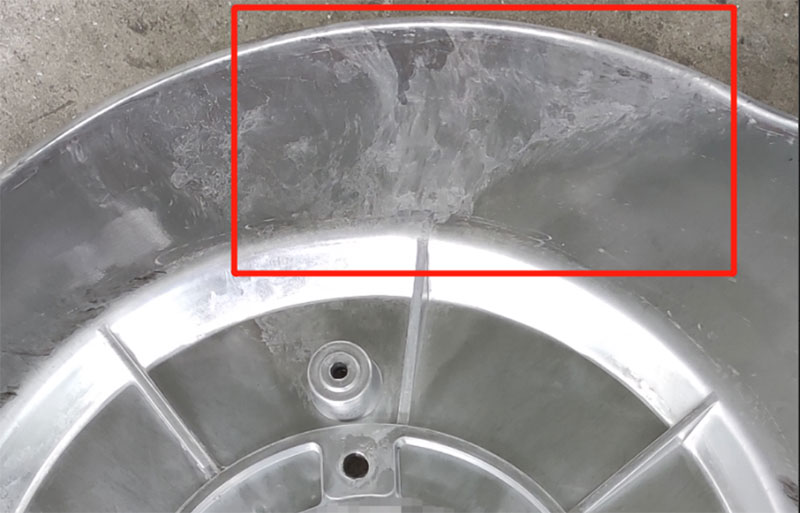Die casting flow marks, commonly known as “flow marks” or “flow marks”, refer to the non directional patterns that are clearly visible and different from the color of the metal substrate when the liquid metal of aluminum alloy flows in the mold during the die casting process. In severe cases, they may also appear together with cold insulation.
As one of the common defects in the die-casting process, flow marks not only affect the aesthetics of castings, but may also have adverse effects on the subsequent surface treatment processes of castings.

1、 The causes of flow marks in die-casting
01 Mold temperature too low
Low mold temperature may cause uneven flow of metal liquid, resulting in flow marks, such as zinc alloy mold temperature<150 ℃ and aluminum alloy mold temperature<180 ℃, both of which are prone to flow mark defects.
02 Unreasonable mold design
Unreasonable design of the flow channel or defects in the mold structure, such as a small cross-sectional area and improper positioning of the sprue, resulting in asynchronous metal flow filling the mold cavity or marks left by splashing.
03 Low temperature of molten metal
The low temperature of the metal liquid leads to poor fluidity of the metal liquid, which is prone to flow marks during the filling process.
04 Improper injection speed
Setting the injection speed too fast or too slow, or insufficient pressure of the metal liquid, may cause unstable flow of the metal liquid, resulting in flow marks.
05 Multiple metal flows are not synchronized
Due to the large temperature difference between multiple streams of molten metal, the solidification of the liquid metal occurs in a sequential order, forming water streaks and leaving traces of flow on the surface of the casting.
06 Improper operation
Improper operation during the die-casting process, such as excessive use of release agents, failure to clean the mold in a timely manner, and failure to operate according to regulations, can also lead to the formation of flow marks.
07 Mold malfunction
The mold has faults such as oil or water leakage, and other foreign objects and impurities are mixed in during the filling process of the metal liquid.
2、 Solution measures for die-casting flow marks
01 Use release agent
Using a thin and uniform release agent on the surface of the mold can reduce the adhesion between the molten metal and the mold, and reduce the generation of flow marks. Applying a layer of release agent between the molten metal and the mold can reduce the adhesion of the molten metal on the mold surface and reduce the generation of flow marks.
02 Polishing the mold
Polish the surface of the mold to improve its roughness, smoothness, and smoothness, reduce resistance during the flow of molten metal, and thus minimize the formation of flow marks.
03 Optimize mold design
Reasonably design the flow channel and mold structure to ensure smooth flow of molten metal. Such as adding overflow channels, increasing gate cross-sectional area, optimizing gate position, etc., to make them flow in the same direction and reduce the generation of flow marks.
04 Adjust mold temperature
Properly increasing the temperature of the mold can reduce the cooling rate of the aluminum alloy liquid, thereby reducing the generation of flow marks. At the same time, it is necessary to ensure a uniform distribution of mold temperature and avoid local temperatures being too high or too low.
05 Control the quality of metal raw materials
Select qualified metal raw materials to avoid affecting the flow and forming of metal liquid due to poor raw material quality.
06 Control the flow velocity of aluminum alloy liquid
The excessive flow velocity of aluminum alloy liquid may lead to the formation of flow marks. Therefore, the flow rate of aluminum alloy liquid can be controlled to be moderate by adjusting the die-casting process parameters, such as injection speed, filling time, etc., to ensure that the metal fully fills the mold cavity and avoid the formation of flow marks.
07 Surface Treatment
For castings that have already produced flow marks, surface treatment can be used to improve their appearance. For example, sandblasting, polishing, painting, and other methods can be used to treat the surface of castings, masking or reducing the impact of flow marks.
08 Timely cleaning of molds
Clean the molds in a timely manner during the production process to avoid impurities and scale accumulation affecting the flow of molten metal, thereby reducing the occurrence of flow marks.


